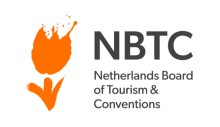- Home
- Research
- Professorships
- leisure and tourism experiences
- Optimal level of tourism crowding

The Optimal Level of Tourism Crowding
Crowding as a result of high levels of tourist visitation is a widely discussed problem in the Netherlands. For destination managers, there exists a conflict between the wish for the highest possible income from tourism and minimizing the negative effects of tourism crowding.
What was the goal of this research?
If tourism crowding levels keep rising, friction between tourists and locals will increase, in addition to the negative experience of physical space. Over the long term, such a situation irreparably harms reputation and ultimately income. The goal of this research is to understand the behavioural and economic impacts of crowding on both the tourist and the destination and to find the optimal tourism crowding level that keeps experience quality high while allowing for maximum possible income.
What method was employed?
This project explored multiple solutions for tourism crowding but focused on measuring the direct influence of crowding on tourist experience and spending. It involved examining emotional responses to different levels of crowding and closeness and assessing tourists' willingness to pay entrance fees and adjust travel plans to avoid crowds.
What findings did we uncover?
The research demonstrated that optimal levels of crowding and distance exist, and people are willing to pay entrance fees and adjust their travel and activity plans when informed about expected crowds. These findings provide destination managers with clues and support to develop effective policies to reduce crowding.
What is the timeline of this project?
2019 – present
Who is our main funding partner?



Want to read more?
Interested in other publications?
BUas uses Pure for all research publications; the up-to-date overview of all BUas knowledge output.